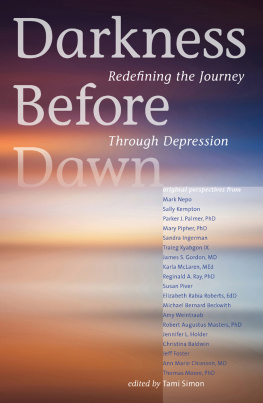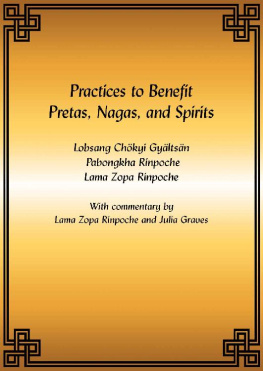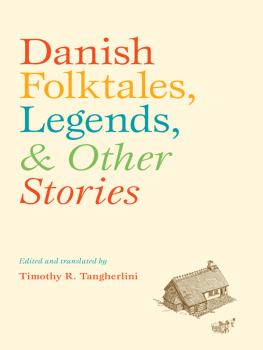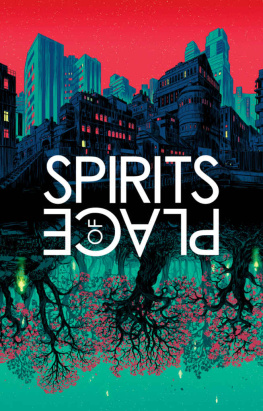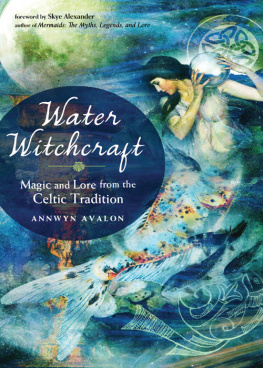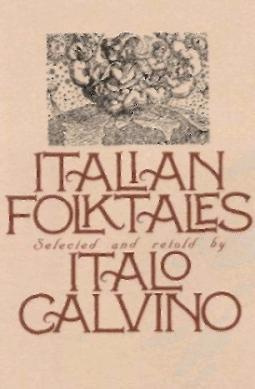Various Authors - Folktales of Water Spirits, Kelpies, and Selkies
Here you can read online Various Authors - Folktales of Water Spirits, Kelpies, and Selkies full text of the book (entire story) in english for free. Download pdf and epub, get meaning, cover and reviews about this ebook. year: 2016, publisher: Read Books Ltd., genre: Detective and thriller. Description of the work, (preface) as well as reviews are available. Best literature library LitArk.com created for fans of good reading and offers a wide selection of genres:
Romance novel
Science fiction
Adventure
Detective
Science
History
Home and family
Prose
Art
Politics
Computer
Non-fiction
Religion
Business
Children
Humor
Choose a favorite category and find really read worthwhile books. Enjoy immersion in the world of imagination, feel the emotions of the characters or learn something new for yourself, make an fascinating discovery.

- Book:Folktales of Water Spirits, Kelpies, and Selkies
- Author:
- Publisher:Read Books Ltd.
- Genre:
- Year:2016
- Rating:5 / 5
- Favourites:Add to favourites
- Your mark:
- 100
- 1
- 2
- 3
- 4
- 5
Folktales of Water Spirits, Kelpies, and Selkies: summary, description and annotation
We offer to read an annotation, description, summary or preface (depends on what the author of the book "Folktales of Water Spirits, Kelpies, and Selkies" wrote himself). If you haven't found the necessary information about the book — write in the comments, we will try to find it.
Folktales of Water Spirits, Kelpies, and Selkies — read online for free the complete book (whole text) full work
Below is the text of the book, divided by pages. System saving the place of the last page read, allows you to conveniently read the book "Folktales of Water Spirits, Kelpies, and Selkies" online for free, without having to search again every time where you left off. Put a bookmark, and you can go to the page where you finished reading at any time.
Font size:
Interval:
Bookmark:
KELPIES, AND SELKIES
.
.
.
.
.
Influence of SceneryScience and SuperstitionLoch-nan-SpoiradanLochan-nan-DeannLochan-Wan and its SacrificeJenny GreenteethPoetry and SuperstitionTweed and TillDee and DonFolk-practices for Finding a Drowned BodyDeeside TraditionSalt used by Tweed Fishers for Good LuckGuardian-Spirit of ConanPeg PowlerWater-kelpiesNikrHalliwell BoggleRobin Round CapRound Hole, near FlamboroughAberdeenshire Kelpy LegendsSome Sutherland KelpiesStory about an Islay KelpyMermaids in the North.
ONE of the great charms of Highland landscape is the gleam of still water that so often gives the element of repose in a scene of broken cliff and tumbled crag, of noisy cascade and driving cloud. No casual tourist can fail to notice what a wonderful variety of lakes he meets with in the course of any traverse he may take across the country. Among the higher mountains there is the little tarn nestling in a dark sunless corry, and half-encircled with grim snow-rifted crags. In the glen, there is the occasional broadening of the river into a lake that narrows again to let the stream rush down a rocky ravine. In the wider strath there is the broad still expanse of water, with its fringe of wood and its tree-covered islets. In the gneiss region of the North-West, there is the little lochan lying in its basin of bare rock and surrounded with scores of others all equally treeless and desolate. So writes Professor Sir A. Geikie in his Scenery of Scotland His point of view is that of a scientific observer, keenly alive to all the varied phenomena of nature. But amid the scenes described lived men and women who looked at the outer world through the refracting medium of superstition. They saw the landscape, but they saw also what their own imagination supplied. In Strathspey, is a sheet of water bearing the Gaelic name of Loch-nan-Spoiradan or the Lake of Spirits. What shape these spirits assumed we do not know, but there was no mistake about the form of the spirit who guarded Lochan-nan-Deaan, close to the old military road between Corgarff and Tomintoul. The appearance of this spirit may be gathered from the Rev. Dr. Gregors remarks in an article on Guardian Spirits of Wells and Lochs in Folklore for March, 1892. After describing the loch, he says, It was believed to be bottomless, and to be the abode of a water-spirit that delighted in human sacrifice. Notwithstanding this blood-thirsty spirit, the men of Strathdon and Corgarff resolved to try to draw the water from the loch, in hope of finding the remains of those that had perished in it. On a fixed day a number of them met with spades and picks to cut a way for the outflow of the water through the road. When all were ready to begin work, a terrific yell came from the loch, and there arose from its waters a diminutive creature in shape of a man with a red cap on his head. The men fled in terror, leaving their picks and spades behind them. The spirit seized them and threw them into the loch. Then, with a gesture of defiance at the fleeing men, and a roar that shook the hills, he plunged into the loch and disappeared amidst the water that boiled and heaved as red as blood. Near the boundary, between the shires of Aberdeen and Banff, is a small sheet of water called Lochan-wan, i.e., Lambs Loch. The district around is now a deer forest, but at one time it was used for grazing sheep. The tenants around had the privilege of pasturing a certain number of sheep. Dr. Gregor says, Each one that sent sheep to this common had to offer in sacrifice, to the spirit of the loch, the first lamb of his flock dropped on the common. The omission of this sacrifice brought disaster; for unless the sacrifice was made, half of his flock would be drowned before the end of the grazing season. As in the case of Lochan-nan-Deaan, an attempt was made to break the spell by draining the loch, but this attempt, though less tragic in its result, was equally unavailing. On three successive days a channel was made for the outflow of the water, but each night the work was undone. A watch was set, and at midnight of the third day hundreds of small black creatures were seen to rise from the lake, each with a spade in his hand. They set about filling up the trench and finished their work in a few minutes. Mr. Charles Hardwick, in Traditions, Superstitions, and Folklore, published in 1872, tells of a folk-belief, prevalent in the North of England, particularly in Lancashire. I remember well, he says, when very young, being cautioned against approaching to the side of stagnant pools of water partially covered with vegetation. At the time, I firmly believed that if I disobeyed this instruction a certain water boggart, named Jenny Greenteeth, would drag me beneath her verdant screen and subject me to other tortures besides death by drowning.
Poetry and superstition regard external nature from the same standpoint, in as much as both think of it as animate. But there is a difference. The one endows nature with human qualities, and knows that it does so through the imagination; the other does the same, and believes that there is no imagination in the matter. The work of the former is well expressed by Dr. E. B. Tylor, when he observes, In all that water does, the poets fancy can discern its personality of life. It gives fish to the fisher and crops to the husbandman, it swells in fury and lays waste the land, it grips the bather with chill and cramp and holds with inexorable grasp its drowning victim. That rivers were monsters hungering, or perhaps, one should say, thirsting, for human victims is a fact borne witness to by poetry as well as by superstition. An example of this occurs in the following popular rhyme connected with the Scottish Border:
Tweed said to Till,
What gars ye rin sae still?
Till said to Tweed,
Though ye rin wi speed,
An I rin slaw,
Yet whare ye droon ae man,
I droon twa.
Some Aberdeenshire lines have the same theme:
Bloodthirsty Dee
Each year needs three;
But bonny Don,
She needs none.
According to folklore, there is no doubt that rivers are uncanny. Beneath their rippling surface dwells a being who keeps a lookout for the unwary traveller and seeks to draw him into the dark depths. A belief in such a being is not always explicitly avowed. But there are certain folk-practices undoubtedly implying it. When anyone is drowned in a river, the natural way to find the body is to drag the stream in the neighbourhood of the accident. But superstition has recourse to another method. A loaf of bread, with or without quicksilver in it, is placed on the surface of the water and allowed to drift with the current. The place where the loaf becomes stationary marks the spot where the body lies concealed. According to another method, a boat is rowed up and down the stream, and a drum is beat all the time. When the boat passes over the resting place of the body the drum will cease to sound. This was done in Derbyshire no longer ago than 1882, in order to find the corpse of a young woman who had fallen into the Derwent. In such practices there is a virtual recognition of a water-spirit who can, by certain rites, be compelled to give up his prey, or at any rate to disclose the whereabouts of the victim. A Deeside tradition supplies a good illustration of this. A man called Farquharson-na-Cat, i.e., Farquharson of the Wand, so named from his trade of basketmaking, had on one occasion to cross the river just above the famous linn. It was night. He lost his footing, was swept down into the linn, and there drowned. Search was made for his body, but in vain. His wife, taking her husbands plaid, knelt down on the rivers brink, and prayed to the water-spirit to give her back her dead. She then threw the plaid into the stream. Next morning her husbands corpse, with the plaid wrapped round it, was found lying on the edge of the pool. Till quite lately, fishing on the Tweed was believed to be influenced by the fairies of the river. Salt was thrown into the water, and sprinkled on the nets to insure a plentiful catch of fish. This was really the offering of a sacrifice to the river-spirits.
Font size:
Interval:
Bookmark:
Similar books «Folktales of Water Spirits, Kelpies, and Selkies»
Look at similar books to Folktales of Water Spirits, Kelpies, and Selkies. We have selected literature similar in name and meaning in the hope of providing readers with more options to find new, interesting, not yet read works.
Discussion, reviews of the book Folktales of Water Spirits, Kelpies, and Selkies and just readers' own opinions. Leave your comments, write what you think about the work, its meaning or the main characters. Specify what exactly you liked and what you didn't like, and why you think so.





